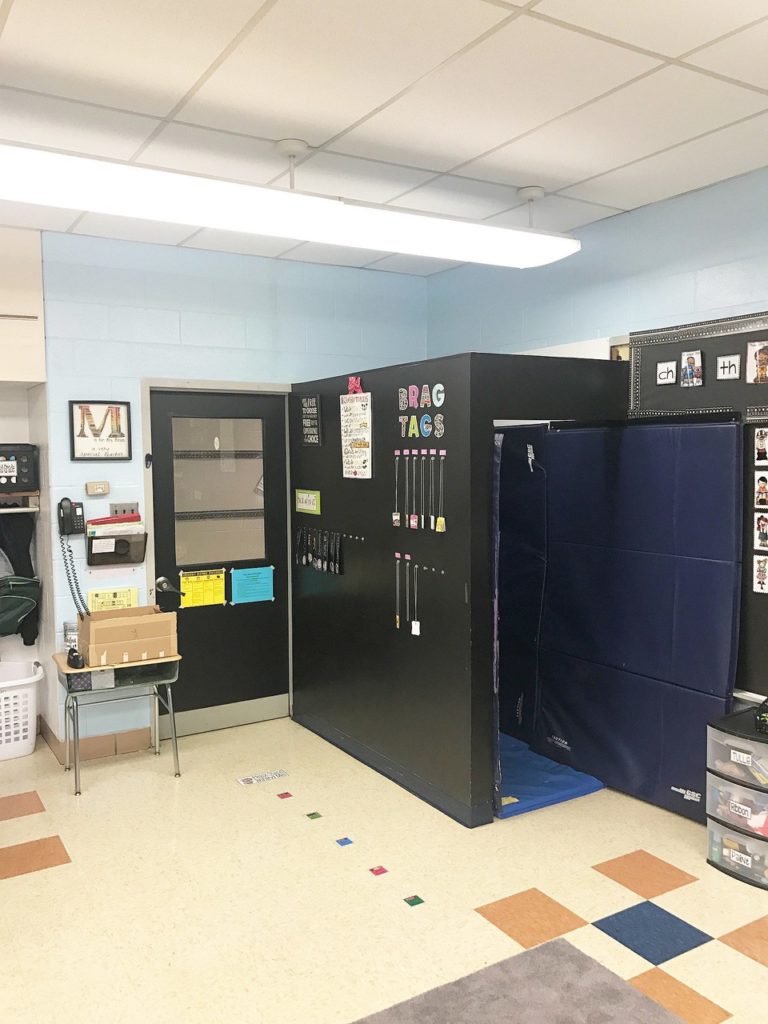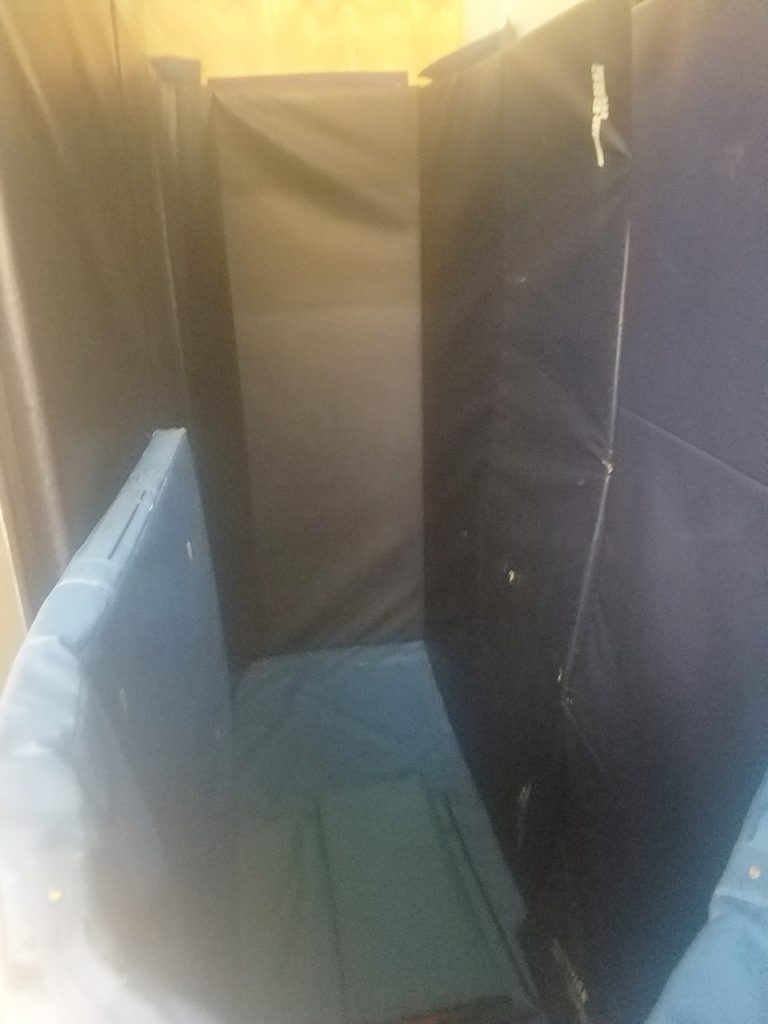
Whitehall Elementary seclusion room
In New Jersey, Monroe Townships School Districts are using solitary confinement, hidden as “timeout rooms” or “calm-down spaces” to punish children in their school districts. A child who has ADHD and is on the autism spectrum came home from Whitehall Elementary School, recounted to his mother and father that he had, “been put in a room for time out.” When asked to describe the room, he called it a little room, almost like a jail. The truth of it was even worse. When parents visited the school, they were given firsthand views of the time out room, and the description of a jail was generous. “This is solitary confinement,” the father, Scott Reiss said of the padded room. “This is unacceptable.”
The seclusion room is a space sectioned off in a corner of a special needs classroom, with padded walls and floors that are usually found in a gym. The room, as explained by Superintendent Richard Perry, “is utilized in conjunction with special education related services and interventions, involving behavioral disabilities in which students may become violent toward other students and staff and/or causing harm to themselves. Also, other students, who are classified, utilize this space as a means of safety when they feel emotionally overwhelmed.”
But the seclusion room looks more like solitary confinement than a room where disabled students can “calm down.” It doesn’t seem like any student can potentially calm themselves after outbursts in such a small, confined space. Instead, it pushes disabled children in a space where they can neither be seen nor heard. While the superintendent claimed that every parent is informed of the room and a report is filed when a child is put in the room, after Reiss went public with the photos, other parents voiced their concerns because they also didn’t know the room existed.
Instead of padded walls, an inviting space could be infinitely more successful in calming a student. Stephanie Reiss, the child’s mother suggested an area with partial walls, beanbag chairs and child-friendly accommodations: “All I want is a better, acceptable space for the kids to calm down. That’s all I want.”
The use of physical restraint and seclusion techniques on students with disabilities is permitted by a state law enacted by Christie in January before he left office. The measure does not specify what a seclusion space should look like. However, it does require prior written consent of the student’s primary care physician, unless the space is needed in an emergency to keep the student or others physically safe. The state law does not apply to the use of “timeout” which it describes as “the monitored separation of a student in a non-locked setting and is implemented for the purpose of calming.”
Though the bill had wide bipartisan support, it raises questions. Lacking specific guidelines on seclusion or time-out rooms, instances like the padded solitary room in Whitehall can be considered an acceptable form of removing an unruly student.
Even though Superintendent Perry has stated that the room is not used as a punishment, the padded walls and mats look far more punitive than relocating a student to have them calm down. If grown adults are affected negatively from such solitary confinement, why do we subject young children to the same? “This is unacceptable.”

Inside the seclusion room